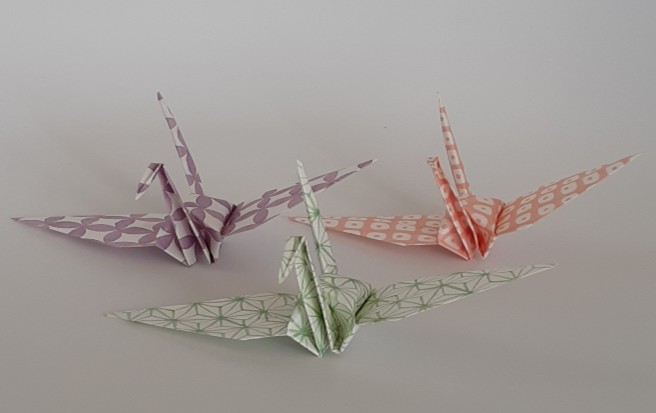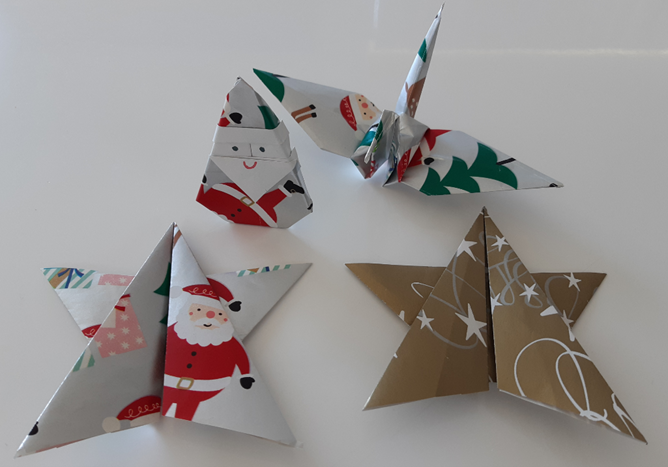Origami (“Ori” meaning folding, and “gami” meaning paper) is the art of paper folding, most often associated with traditional Japanese culture. Today, the word origami is used as an inclusive term for
all folding practices regardless of their culture of origin. The goal of origami is to transform a flat square sheet of paper into a finished sculpture through folding and sculpting techniques.
For most people, especially children, origami is a way of expression, but it also keeps them engaged, relaxed, and gives them an opportunity to be creative. Research shows that origami can help people recovering
from hand injury or surgeries, improving hand control, fine motor coordination, and building muscles. Origami has also been found to help people with ADHD, anxiety, autism and depression.
More recently origami has become a popular activity among seniors, including those affected with Alzheimer’s, to help improve their hand-eye coordination, focus, and mental skills. It stimulates the brain while
the hands are deftly creating shapes with simple folds, and it keeps the mind sharp when following instructions for different shapes. It can help relax, enhance self-esteem and provide a
sense of achievement. It can also improve spatial skills, imagination, and induce the motivation to create new shapes by visualising them.
The best part is that the only material it needs is paper. It can be done anywhere and with people of any age. Most people would have grown up folding paper boats and airplanes. As you learn origami, you can try more intricate
designs like birds, fishes, flowers, plants, frogs and more. In general, these designs begin with a square sheet of paper whose sides may be of different colours, prints, or patterns. Traditional Japanese origami, which has been
practiced since the 1603, has often been less strict about these conventions, sometimes cutting the paper or using non-square shapes to start with.
The Japanese paper crane is probably the best-known and most popular of origami. In Japan, the crane is considered one of the mystical or holy creatures said to live for a thousand years.

An ancient Japanese legend promises that anyone who folds one thousand origami cranes will be granted a wish by the gods. Some even believe they will be granted more than one wish of eternal happiness and good
luck. This makes them popular gifts for special friends, family, the sick in hospital, or anyone going through a difficult life challenge.
The cranes were popularised through the story of Sadako Sasaki, a Japanese girl who was two years old when she was exposed to radiation from the atomic bombing of Hiroshima during World War ll. Sadako soon
developed leukemia and, at age 12 after spending a significant amount of time in a hospital, began folding origami cranes with the goal of making one thousand, inspired by the origami legend.
Several temples in Japan have eternal flames for world peace, where school groups or individuals often donate a thousand cranes with their prayers for peace. The cranes are left exposed to the elements, slowly becoming tattered, disintegrating
symbolically to mean their wish has been released.
Folding a crane is actually not too difficult. All you need is a single square sheet of paper. Below are some links to step-by-step instructions to walk you through exactly how to fold one yourself.
Are you ready to fold? Then let’s get started!
You can also create Christmas gifts or ornaments by origami. Here are a couple of suggestions:

